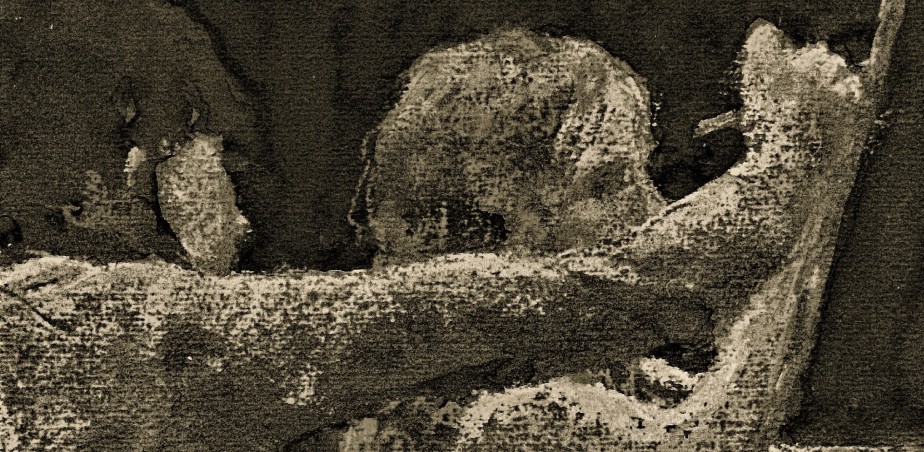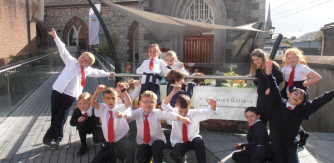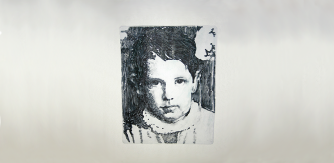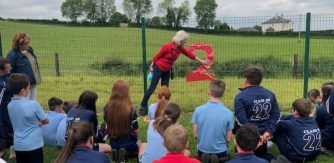Blog 2 – Vera McGrath, Visual Artist, Researcher & Former Primary Teacher

An artist guiding her niece at the easel (section of the image). Watercolour and pastel on Fabriano paper.

Vera McGrath is a visual artist, freelance researcher and former primary teacher. Living in Co Monaghan, she has been involved with Teacher Artist Partnership (TAP) since its inception in 2014. She is also a member of the Irish I-TAP, (International Teacher Artist Partnership) lead team, an Erasmus+ funded TAP initiative currently being developed by Ireland and 3 other jurisdictions. She holds a MAVA degree (Masters in Visual Arts Education) from NCAD. She has just finished a BLAST programme as the artist in residence in a school in Castleblaney, Co Monaghan.
In the forthcoming blogs, she elucidates on some of the many insights she has gleaned in her time as a TAP team member, how she found the courage to voice her desire to transition from teacher to artist within its framework and what she’s learned from holding firmly to her many identities and persevering. Vera owes a debt of gratitude to the TAP initiative for facilitating her transition.
This blog series is dedicated to two inspirational figures in the field of Arts in Education in Ireland: Caitríona Ní Chullota for her example, her support and for recognising that Vera had a valid voice in TAP and Gary Granville for quietly endorsing Vera’s right to write on Arts in Education matters. Míle Buíochas.
Teacher, Artist, Other
May 6th 2022. I visit a school in Cavan. My role; a ‘critical friend’ in an Action Research capacity on behalf of our International-Teacher-Artist Partnership (I-TAP-PD) PD Programme. I sit, observing, relishing what unfolds: An artist and teacher in near-perfect synchronicity, finishing each other’s sentence. I’m unable to tell one from the other. Digging further, I discovered that the teacher had taught the art skill to the artist in her kitchen and the artist prepared self-assessment booklets so students could track their learning. They have, in essence, exchanged roles and I’m witnessing my own audacious claim in action. “There’s an artist and a teacher in all of us.” But it’s really no surprise.
Vygotsky’s theories, cornerstones of modern curricula, hold that children learn primarily by observing and engaging in activities, guided by those more experienced, skilled or knowledgeable. Adults, whether parents, family members, neighbours, carers, coaches or community leaders provide the majority of this tuition, outside of formal education. As social beings who nurture our young, teaching is a critical human enterprise. We all teach, at some juncture, whether actively, passively, under contract or by default. It’s the impulse that spurs some graduates to choose teaching careers and prompts many artists to become involved in education, run workshops or engage apprentices.
Correspondingly, the compulsion to create is innate. Our capacity to imagine what does not exist is a cognitive strength that supports human advancement. To access and give form to creative thought, we engage in playfully explorative behaviours like acting, dancing, music-making, story-making, hypothesising, illustrating, constructing, concocting and crafting. These ‘creative’ practices are the fora for working through and testing our ideas. And creativity can manifest in many areas of practice; from book-binding to baking, from constructing mathematical theory to music-making.
One of Teacher-Artist Partnership (TAP) unique features is its potential to develop both competences in participants, the educator and the creator, waking the ‘other’ in those who stay engaged. This has supported me immensely in declaring my own identities and I trust my narrative will encourage others to recognise that the many hats they wear in life are equally worthy of recognition and validation.
Published
24/8/2022


